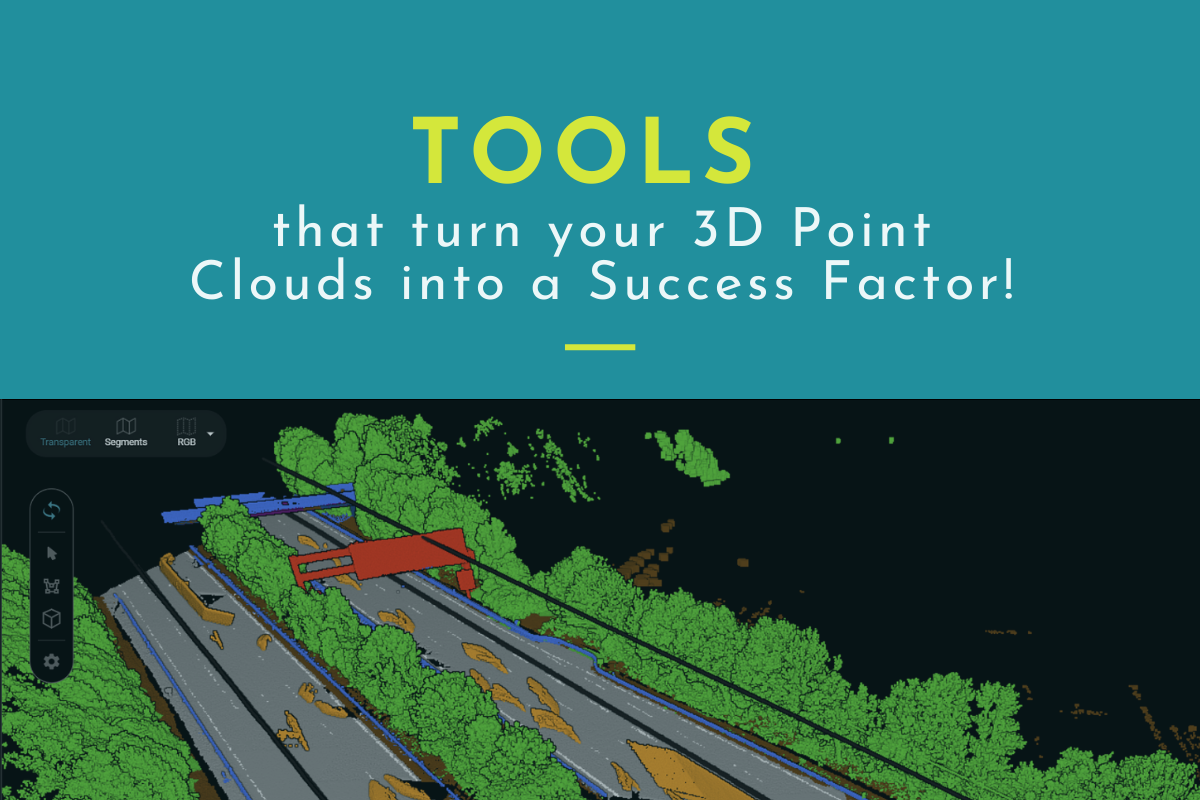
Intelligent selection tools
turn 3D point clouds into a success factor!
published: 19.03.2020
updated: 27.10.2020
Let’s face it: Despite their usefulness in digitizing the real world, 3D point clouds can be tedious to work with. Already visualizing a large point cloud can be slow and editing them can be a struggle. That is why point clouds are often written off as a raw product with the focus being put on processed data formats such as raster for DEMs or cad formats for BIM Models.
But these processed formats can only be as good as what can be extracted from the point clouds. We at Pointly believe that there is a lot of untapped potential in point clouds and it is our mission to provide simple tools and services to make that potential accessible to you.
What’s the current situation for 3D point cloud tools?
Conventional point cloud tools are limited. Have you ever tried to cut out a complex 3D object from its surroundings relying on 2D tools on a 2D screen? It takes a lot of patience to find the right views to apply the right selection and a lot of time to remove accidentally selected points. That is why most of us rarely bother. We use point clouds as visualizations for virtual inspections and limit our work with them to measuring simple distances and transects where they can easily be placed.
Or we rely on the output of standard classifiers to separate ground, vegetation and buildings, to focus better on what matters but often with unsatisfactory results.
The autonomous driving sector is a notable exception. Teaching self-driving cars how to navigate the world safely requires the automatic detection of objects such as cars, pedestrians, street signs and other obstacles.
Standard classifiers are not fit to such complex tasks. Advanced AI is required to extract this information from point clouds.
But AI requires training data (that is human-made annotations) which it can use as examples to learn from. That is why we are back to the initial problem: The tedious task of manually editing point clouds.
The autonomous driving sector has recently made spectacular breakthroughs when it comes to training AI to detect pedestrians and other objects. How have they done that, and could their approaches be transferred to other point cloud use cases?
Yes and no.
Training data for self-driving cars is usually generated in the form of bounding boxes. Those are cuboids that are manually drawn into the point cloud to demarcate single objects of interest. That might work for single-standing objects and is enough for many street scenes but let’s assume you want to accurately detect parts of a building. Think about trying to draw a bounding box around the complex shape of a roof without including walls and other objects that you would like to separately detect – it is impossible.
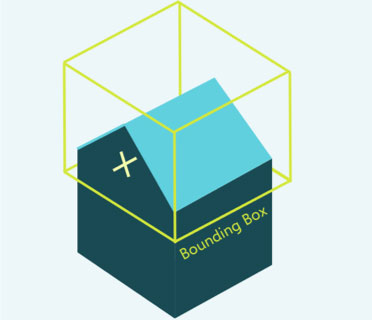
At Pointly we know that the advances in 3D AI have incredible potential for many more use-cases. Following 3 examples, where those advances could take place:
- In the construction sector they would allow to detect building components automatically and thus help to track progress, calculate material requirements, and identify safety risks.
- In urban planning they could produce detailed registries of urban inventory resulting in much improved city models.
- In the Forestry sector they can be used for tree stand detection and yield estimation.
So, ask yourself what if you could not only detect any real-world object automatically in point clouds but also drill it down to its components? And turn all that into better and more detailed 3D models as well as maps?
That is the untapped potential of point clouds and the promise of 3D AI.
So how do we get there?
Work efficiently with Pointly’s intelligent selection tools
To train classifiers in order to detect custom objects from point clouds we need training data to teach the AI by example. The only limit here is the quality and the amount of training data one can generate. Conventional tools are either too slow or too limiting to effectively train AI with. Pointly’s intelligent selection tools offer a simpler and more effective way to do so.
Launched in Q2 2020 Pointly’s most important tool is the segment selector. This tool allows you to select coherent segments with only one click. No need to zoom around, change views and draw a perfect border. Pointly has already figured out the most likely breaks between distinct objects in your data and allows you to make selections based on them. That way complex objects with difficult outlines can be quickly selected and assigned with an object class.
To support different levels of detail, the segment tool allows choosing between different degrees of segment granularity. Those range from “fine” over “medium” to “coarse” and are designed to cover different use-cases across all possible point cloud types and resolutions. That way you can select large swathes of ground with one click and street signs with the next.
A polygon lasso tool provides an alternative wherever you would wish to adapt the segments manually. But the accuracy of Pointly’s segment finder already satisfies most of all objects and does the heavy lifting for you. Our labeling service provider said to that:
“This would have taken one of my guys a day, now you can do it with one click.”
Another useful feature is the 3D Bounding Box. With this versatile tool you can control the selection depth. Thus, you’ll be able to classify objects which are really close to other objects or which need to be separated in space. Quick tip: Finish your selection by clicking on the right mouse button.

All selection tools directly integrate with the assignment of object classes so there is no need to additionally assign those. Simply activate the class you would like to label and start clicking.
The segment tool is only the beginning of many more intelligent selection tools that will speed up working with point clouds: Next in the pipeline is a dynamic Magic Wand selector as well as a tool for selecting similar objects to already selected ones. Stay tuned!
Pointly – Point out what matters.

Pointly is an intelligent, cloud-based software solution to manage and classify 3D point clouds – faster and more precise than ever before.
With Pointly Services you can get on-demand advanced 3D point cloud solutions tailormade for you.

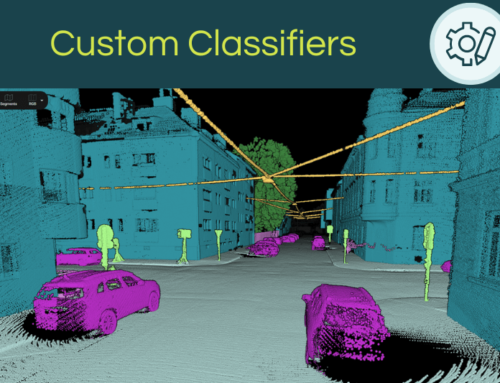
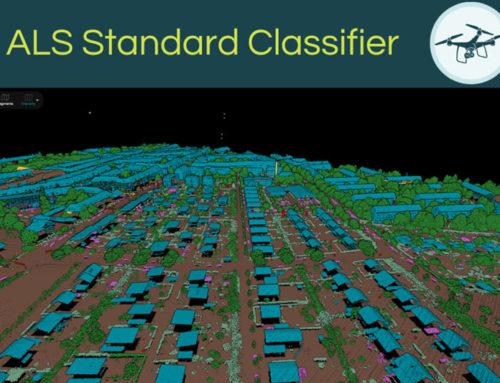
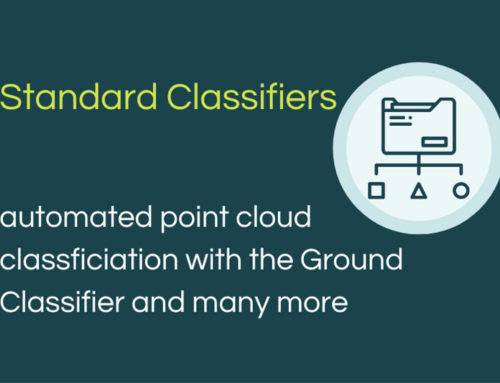
Hello, First of all, I read your article and your information about BIM it’s really amzing and so much helpful for me. Keep it up and Thank you very much.:)
Hey Carl, thank you very much for your feedback! We will definitely post more blog posts soon.
Best Regards,
Francie of Pointly
Great article, I really appreciate that there are people like you out there who put out introductory articles to BIM.